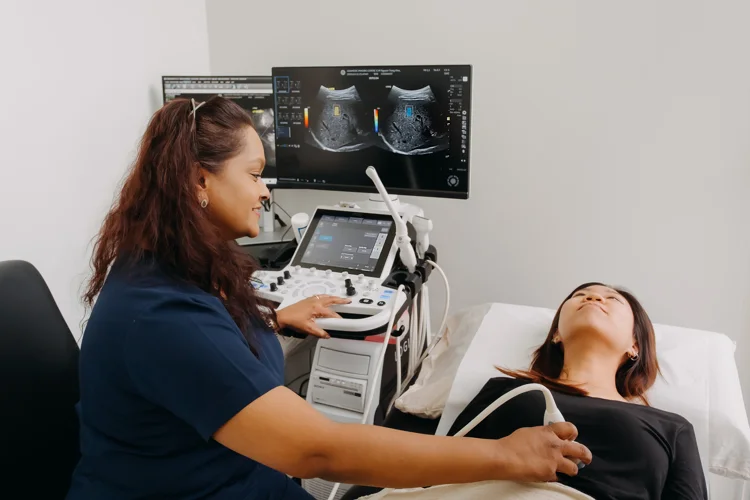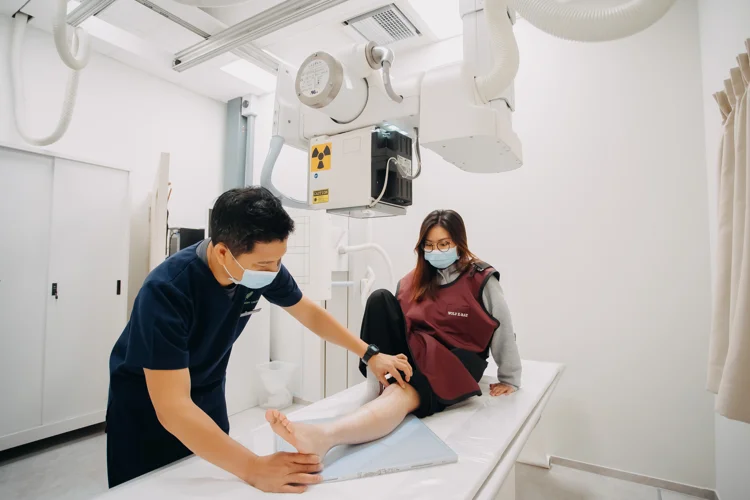Understanding STD Rashes: Key Signs and Treatment Options
What Is an STD Rash?
Rashes are changes in the skin that may be a sign of a sexually transmitted disease (STD). These rashes can be anything from little red pimples to bigger blisters, ulcers, or patches. The rash may be contagious and might develop on the hands, chest, genital area, or even the palms and soles. While skin symptoms are often overlooked compared to more commonly recognised signs like pain during urination or unusual discharges, it’s important to note that rashes can vary widely in appearance and are not always indicative of an STD. Consulting a doctor is essential, as this helps prevent self-diagnosis or misinterpretation, ensuring appropriate care and protection for your health.

STDs That Can Cause Skin Rashes
The following is a quick summary of STDs that can manifest as rashes:
| STD | Description | Appearance |
|---|---|---|
| Herpes Simplex Virus (HSV) | An infection that causes blisters or sores in the vaginal or oral regions and is brought on by HSV-1 or HSV-2. The illness frequently shows up as outbreaks that resemble rashes. | Blisters that are painful and filled with fluid, cluster, and then crust over. They are frequently found on the surrounding skin, genitalia, or mouth. |
| Syphilis | A bacterial infection that develops in phases, with a rash often identifying the secondary stage. | Patches or spots that are reddish-brown and usually show up on the palms of the hands and soles of the feet. The rash can spread across the body and is often not itchy. |
| Gonorrhoea - Disseminated Gonococcal Infection (DGI) | A severe bacterial infection that mostly affects mucosal membranes can spread and result in systemic symptoms, such as rashes. | Red or purplish skin rashes that frequently have patches on the trunk or limbs and can manifest as tiny pustules or elevated lesions. |
| Chlamydia | A bacterial infection that can be asymptomatic, but can cause reactive arthritis, which might show up as a rash, even though it is usually asymptomatic. | Reactive arthritis-related rash frequently manifests as little red spots or patches on the skin, especially on the legs. |
| HPV | A viral infection caused by different strains that can lead to genital warts that look like a rash. Over time, these warts may spread and vary in appearance. | Flesh-colored lumps or warts that can have a smooth or cauliflower-like appearance, mostly seen in the vaginal or anal area. |
| HIV | A viral infection that weakens the immune system and may cause rashes in the acute stage or later on as a result of other diseases. | Rashes may appear anywhere on the body and be red, flat, or slightly elevated. Frequently manifests as a widespread rash with blotchy skin or tiny pimples. |
Other Signs & Symptoms to Look Out for
If you suspect a rash may be linked to an STD, watch for other signs such as:
- Rashes that keep reappearing
- Rashes following sexual activity
- Burning or itching sensations
- Genital sores or ulcers
- Unusual genital discharge
- Pain or discomfort during urination
- Flu-like symptoms or fever alongside the rash
- Swollen lymph nodes in the neck or groin
Some rashes and symptoms are associated with sexually transmitted diseases (STDs), but not all of them are. A proper medical evaluation is required to identify the cause and for proper treatment.

Diagnosis of STD Rashes
Your doctor may do the following to properly diagnose an STD rash:
- Physical Examination: A detailed inspection of the rash’s appearance, size, and location provides an initial assessment.
- Laboratory Tests: To determine the precise infection, swabs, blood tests, or biopsies of the afflicted area are performed. These tests may take some time to process, but they can also identify any co-infections.
It’s also important to discuss other potential causes of rashes with your doctor, such as allergies, infections, or autoimmune conditions, to ensure a thorough and accurate evaluation. Comprehensive diagnosis helps identify the root cause and ensures appropriate treatment.
Treatment of STD Rashes
Treatment focuses on easing symptoms and addressing the underlying infection:
- Relief of Symptoms: Topical creams and pain relievers can help soothe irritation and reduce inflammation.
- Bacterial Infections: Antibiotics effectively treat bacterial STDs like syphilis, gonorrhoea, and chlamydia, curing the infection and preventing further issues.
- Viral Infections (e.g., herpes, HIV): Antiviral medications are used for managing conditions like herpes and HIV. While these infections are incurable, treatment helps control symptoms, reduce outbreaks, and manage viral load.
Prompt diagnosis and treatment can prevent the condition from worsening, lower the risk of complications, and protect sexual partners from exposure. Practising safe sex, undergoing regular screenings, and fostering open communication with partners are key to prevention.

Summary
STD rashes are a common but frequently overlooked symptom of some sexually transmitted infections. Recognising accompanying symptoms and seeking medical attention is critical because testing is the only way to confirm an STD diagnosis. Early treatment lowers the risk of complications and safeguards your loved ones. If you notice a rash or other unusual symptoms, see a doctor and get tested promptly.
Why Choose Us?








Navigate Easy With Google Maps
Health Screening Singapore
(Anson House)
Health Screening Singapore
(Camden Medical Centre)
Frequently Asked Questions (FAQ)
Several STDs can result in skin rashes, including syphilis, herpes simplex virus (HSV), HIV, gonorrhoea (via disseminated gonococcal infection), and certain HPV strains. These rashes may take the form of red patches, spots, blisters, or warts, depending on the infection.
Common symptoms of STDs include abnormal genital discharge, burning or pain during urination, and sores or ulcers in the genital area. Additional signs may involve itching or irritation in the genital region and rashes or bumps on the skin.
Black spots caused by STDs may appear as darkened patches or lesions, often due to infections like syphilis or HPV. These may sometimes be swollen or painful. However, other conditions like hyperpigmentation, moles, angiokeratoma, or even melanoma could also cause black spots. It is best to consult a doctor for proper diagnosis.
Itchy rashes and blisters on the hands can sometimes be linked to STDs, such as herpes (herpetic whitlow) or secondary syphilis. However, these symptoms are also associated with non-STD conditions like eczema, allergic reactions, or fungal infections. Consulting a doctor is vital for accurate diagnosis and treatment.
The duration of an STD rash varies by infection. For instance, syphilis rashes in the secondary stage may persist for several weeks, while herpes blisters usually heal within 1–2 weeks. HIV-related rashes can be recurrent or prolonged, depending on the individual's immune health.
A gonorrhoea-related rash, often caused by disseminated gonococcal infection (DGI), may appear as red or purplish lesions, pustules, or raised bumps. These rashes commonly develop on the trunk or limbs.
The timing of an STD rash depends on the infection. Syphilis rashes typically emerge weeks after initial exposure during the secondary stage, while herpes rashes may develop within a few days to a week. HIV-related rashes often appear 2–4 weeks post-infection during the acute phase.
Yes, certain STDs like syphilis, HIV, or herpes can lead to lesions or sores that cause skin peeling in the mouth due to inflammation or secondary infections. Gonorrhoea and chlamydia may also result in oral symptoms like throat inflammation but rarely cause peeling.
Red spots linked to STDs are often associated with infections such as syphilis, HIV, or herpes. These spots may be flat or raised, varying in size, and could be itchy or painful. However, they can also stem from other conditions like allergies or fungal infections, so testing is required for a definitive diagnosis.
STD bumps can appear differently depending on the infection, but not all bumps are definitive indicators of an STD. For example, herpes may cause fluid-filled blisters, HPV can result in flesh-colored warts, and syphilis might present as firm, painless sores during its early stages. However, these symptoms can overlap with other conditions like skin infections or allergies. Only a proper medical evaluation can confirm whether such bumps are related to an STD, so it’s important to consult a doctor for an accurate diagnosis.
Testing is the only definitive way to confirm an STD. If you notice unusual discharge, sores, rashes, itching, or pain during urination, it’s important to consult a doctor for screening. At healthscreening.sg, we provide discreet and confidential testing for specific STDs as well as STD screening packages.
HPV (Human Papillomavirus) is among the most easily transmitted STDs, often spread through direct skin contact, even without sexual intercourse. Other highly transmissible infections include chlamydia and gonorrhoea.
The first stage of an STD depends on the infection. Primary syphilis starts with a painless sore at the infection site. Herpes typically begins with itching or tingling, followed by blisters. Early HIV symptoms often mimic the flu.
Infections like herpes simplex virus (HSV) and HIV cannot be cured but are manageable with antiviral treatments. HPV is also incurable, though many cases resolve naturally. Chronic hepatitis B is treatable but cannot be completely cured.
STD spots may appear as flat or raised red areas, dark patches, blisters, or warts, depending on the infection. For example, syphilis causes reddish-brown spots, HPV leads to warts, and herpes results in blisters.
STDs such as syphilis, herpes, HIV, gonorrhoea (DGI), reactive arthritis (caused by chlamydia), and HPV can lead to skin rashes, each with unique characteristics.
STD bumps may resolve on their own or with treatment, depending on the infection. Herpes blisters typically heal within 1 to 2 weeks, while HPV warts may persist or recur. Treating the underlying infection is vital to prevent recurrence.
A syphilis rash often presents as reddish-brown patches, typically non-itchy and found on the palms, soles, or other areas. Testing is the only way to confirm syphilis, so consult a doctor for a proper diagnosis if you suspect it.
Syphilis often begins with a rash during its secondary stage. HIV may also cause a rash early on, appearing as one of the first signs of infection.
HIV/AIDS, chronic hepatitis B, and herpes are among the most serious STDs due to their incurable nature and long-term health effects. HPV, linked to cancers like cervical cancer, and syphilis, which can cause systemic damage if untreated, are also significant.
Herpes, syphilis, and HIV can cause body itching, often due to rashes or sores. Accompanying symptoms like fever, swollen lymph nodes, or unusual discharge may also occur, requiring medical evaluation and treatment for the underlying infection.
